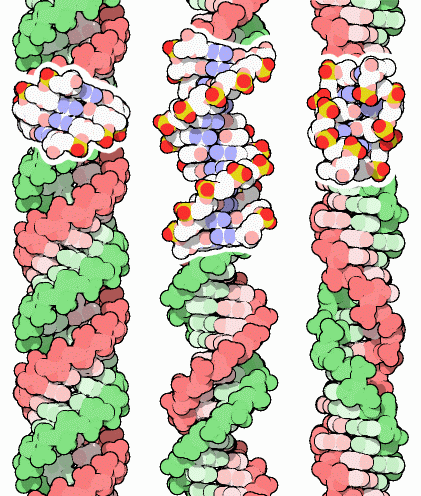|
Inhaltsübersicht | Nanomaschinen | Moleküle | Programme | Kurse | Fun | Links |
||
| > |
DNA

Variations on a Theme
DNA adopts the familiar smooth double helix, termed a B-helix, under the typical conditions found in living cells. An example is shown in the center, exemplified by the crystal structure in PDB entry 1bna, shown at the top superimposed over the idealized version of the B-helix. Under other conditions, however, DNA can form other structures, as revealed in two early crystal structures: PDB entries 1ana on the left and 2dcg on the right. The one on the left, with tipped bases and a deep major groove, is termed A-DNA. It is formed under dehydrating conditions. Also, RNA most often shows this form, because its extra hydroxyl group on the sugar gets in the way, making the B-form unstable (look, for instance, at the A-helical structure of transfer RNA shown in a previous Molecule of the Month). The form on the right, which winds in the opposite direction from A-DNA and B- DNA, is termed Z-DNA. It is found under high salt conditions and requires a special type of base sequence, with many alternating cytosine-guanine and guanine-cytosine base pairs.Next: Exploring the Structure
Previous: Molecular Information
Last changed by: A.Honegger,